School facilities
See the equipment we have housed within the School of Geography, Earth and Atmospheric Sciences.
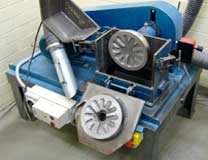
Sample preparation - Rock Crushing
Prior to chemical analysis, geological materials are often crushed to a powder to homogenise them, or their constituent minerals separated from each other for individual analysis. This laboratory includes a variety of equipment used in these procedures such as hydraulic splitter; jaw crusher; steel, tungsten carbide and agate ring mills and disc mills
Contact: Abaz Alimanovic.
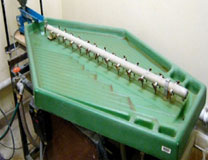
Sample preparation - Mineral Separation
After bulk rock samples have been reduced to a small grain size in the Rock Crushing Laboratory, their constituent minerals can be separated from eachother for a variety of geochemical applications such as geochronology and elemental analysis. These procedures use wilfley tables, heavy liquids and magnetic separation systems
Contact: Abaz Alimanovic.
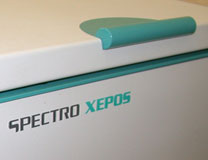
Energy dispersive X-Ray Fluorescence analysis (ED-XRF)
XRF is an analytical technique providing chemical compositions of a wide variety of geological materials. Our ED-XRF Laboratory is used predominantly for the determination of major rock constituents (elements present at levels of 0.1 to 100%) with Inductively Coupled Plasma Mass Spectrometers (see separate section) used for trace element analysis
Contact: Jon Woodhead.
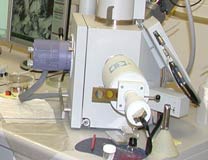
Electron Microscopy and in situ X-ray Microanalysis
Our Philips FEI XL30 environmental Scanning Electron Microscopes (SEM) provides imaging of geological and environmental samples (magnification of up to 50,000x), semi-quantitative elemental analysis and cathodoluminescence images for investigation of mineral structures. Our Cameca SX50 Electron Microprobe allows acquisition of 'in situ' elemental analyses of minerals in thin sections and mounts.
More information
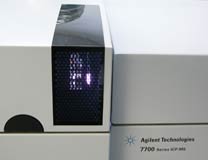
Quadrupole Inductively Coupled Plasma mass spectrometer (Q-ICPMS)
Our Q-ICPMS provides trace element analyses (most elements across the Periodic Table from Lithium to Uranium) of geological materials at ppm to ppq levels. It can also be used for 'in situ' analysis and geochronology of minerals such as zircon and monazite when coupled to our laser ablation systems.
Contact: Alan Greig or Jon Woodhead.
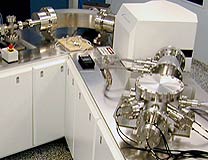
Multi-collector Inductively Coupled Plasma mass spectrometers (MC-ICPMS)
Our MC-ICPMS instruments provide isotopic analyses of geological materials at the ppm to ppt levels. Most elements from Lithium to Uranium may be analysed. We operate two instruments, one for Pb, Sr, Nd, Hf, and Cu isotope analyses, the other optimised for high-precision U-Th-Pb geochronology.
Contact: Jon Woodhead or Roland Maas.
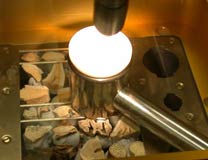
Laser ablation microprobes
Laser ablation is a sampling technique used in conjunction with the ICPMS instruments (see separate sections) allowing 'in situ' analysis of a wide range of materials. Our systems allow analysis of spots, 5-400 microns in size, or slits from 3 micron in width, coupled with line scans and extensive elemental and isotopic mapping capabilities for areas of up to several square centimetres
Contact: Jon Woodhead.
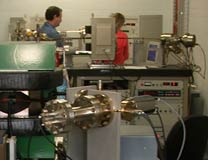
Noble Gas Geochronology and Geochemistry
This laboratory houses a number of instruments allowing dating of geological materials using the 40Ar-39Ar chronometer and determination of noble gas isotope ratios for petrogenetic studies. We can also perform combined noble gas and halogen geochemistry studies, and are one of only two laboratories in the world with this capability
Contact: David Phillips.
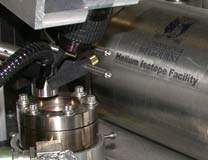
(U-Th)/He geochronology
This system allows acquisition of (U-Th)/He geochronology and thermochronometry data on minerals such as apatite and zircon. The system is based around a Coherent fibre-optically coupled diode laser for gas extraction, a Balzers quadrupole mass spectrometer for He gas analysis, and Olympus binocular microscope systems for grain characterisation.
Contact: Barry Kohn.
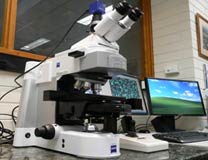
Fission track Laboratory
The FT laboratory is part of our thermochronology research program providing fission track analysis of the minerals apatite, zircon and titanite. The laboratory comprises advanced digital microscopes and cameras all under computer control for automatic acquisition and analysis of high resolution images
Contact: Barry Kohn or Andrew Gleadow.
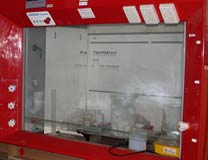
Cosmogenic isotope analysis
This laboratory provides facilities for target preparation prior to 10Be, 26Al cosmogenic isotope analysis by accelerator mass spectrometry. The technique is used predominantly on separates of the mineral quartz and is widely used in studies of landscape evolution and neotectonics
Contact: Abaz Alimanovic.
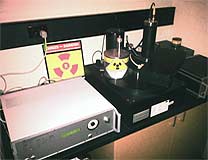
Luminescence Lab
This laboratory is equipped with a darkroom and systems for performing optically stimulated luminescence geochronology of Quaternary materials. The facility is used widely in archaeological studies and studies of young sedimentary systems.
Contact: Matt Cupper.
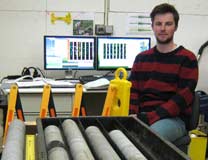
Petrophysics Laboratory
The Petrophysical Laboratory is a component of the the Australian Geophysical Observing System (AGOS - link) and enables researchers to conduct studies on the physical properties, and constitutive behavior of rock samples recovered from depth by drilling. A multi-sensor core logging system provides a suite of geophysical measurements on sediments and rock cores
Contact: David Belton.